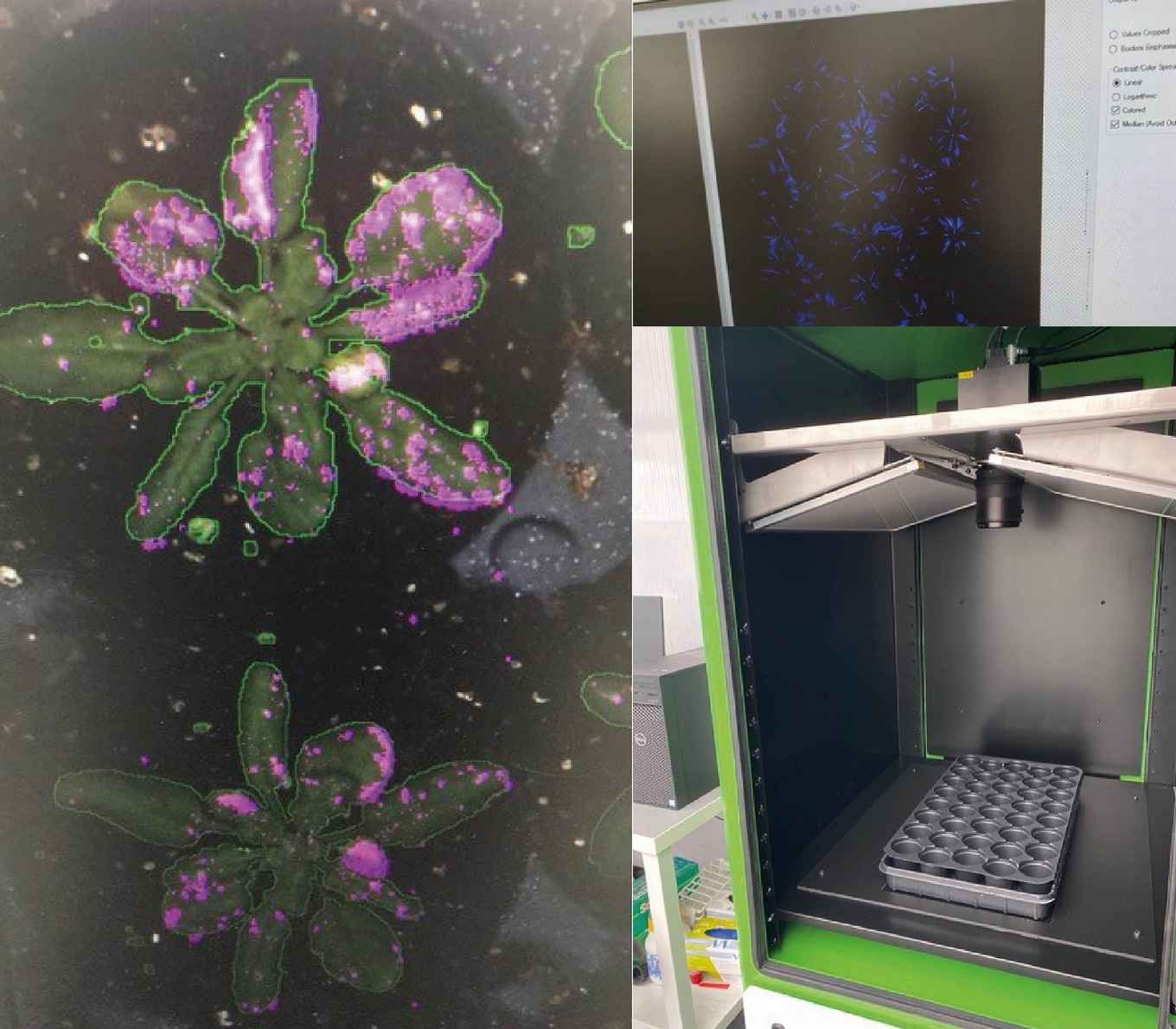Real time imaging of bacteria inside living plants
18 September 2020

We can now infect +2,400 plants in one experiment and score their disease severity automatically and unbiasedDr Harrold van den Burg
The research group of Dr Harrold van den Burg developed the imaging system together with the company Lemnatec. The resulting “Phenotyper” will be used to image the spread and growth of bioluminescent bacteria in plants. The resolution of the system is high enough to know where the leaf gets infected: the researchers can even detect bacterial colonies inside hydathodes – tiny organelles present on the leaf margin that act as pressure valves of the leaf veins, that open when the root pressure exceeds water evaporation. These hydathodes are an important entry point for several pathogenic bacteria, many belonging to the genus Xanthomonas. Dr van den Burg: 'we have developed this imager together with a leading company in digital phenotyping, Lemnatec. As our imaging method is non-invasive and non-destructive, we can study Arabidopsis plants for extended periods, and even perform large scale genetics projects. Our cameras are so sensitive that we can real-time track the bacteria as they invade the plant and we can follow their subsequent spread throughout the tissues'.


Getting the Phenotyper to the greenhouse
The Phenotyper imaging system was installed last month, after completion of construction works to create extra space in the greenhouse facilities at Science Park. Dr van den Burg: 'To accommodate the phenotyping facility the capacity of the contained high-level biosafety compartment of our greenhouses had to be expanded. We are grateful for all help of our faculty and SILS that made this possible. We can now infect +2,400 plants in one experiment and score their disease severity automatically and unbiased'. With this facility, the researchers will study how plants guard their bacterial entry route in detail. The research group collaborates with partners in the Breeding Industry to apply their results in crops. Knowing the mechanisms behind invasion will contribute to the dream of in the future generating crops that are resistant to these devastating bacterial pathogens.